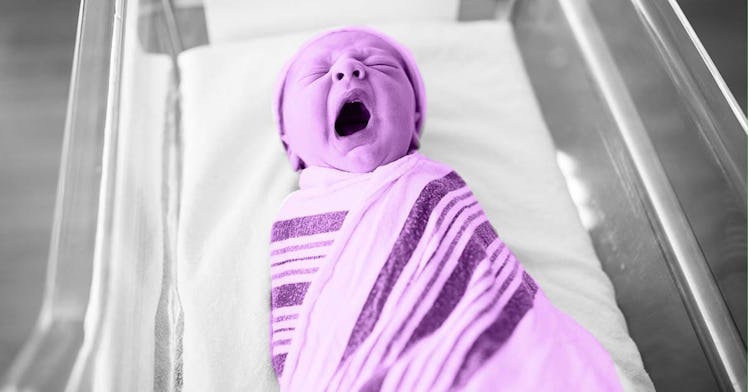When to Stop Swaddling Your Baby
You may have started swaddling naturally, but it's important to know when to stop

If babies came with a quick start guide, swaddling would be noted as standard operating procedure for your new human. Babies are often swaddled on the maternity ward, to keep them warm and comfortable, and the practice is often carried into the home. But while parents understand that swaddling can be helpful, particularly when getting and keeping a baby asleep, it’s far less clear when to stop swaddling. And that’s an important consideration when it comes to maintaining safe sleep practices as a child grows. The good news is that the guidance on when to stop swaddling a baby is very clear and swaddle transition can be readily managed.
When to Stop Swaddling A Baby
A good swaddle — one that is snug around the arms but loose at the hips and feet — is a great tool to help keep babies asleep. Dr. Harvey Karp, Pediatrician and author of The Happiest Baby on the Block points out to his readers that swaddling provides a sense of comforting womb-like confinement for an infant. But also, the wrap combats the random uncoordinated movement of the arms that can inadvertently wake a baby in the night. However, the swaddle should only be used when following safe sleep practices that include placing a baby on their back to sleep, in a crib with a firm mattress and no extraneous blankest toys or accessories. And in fact, safe sleep practices inform when parents should stop using a swaddle.
American Academy of Pediatrics sleep guidelines author Dr. Rachel Y. Moon notes that while swaddles are beneficial, “When your baby looks like he or she is trying to roll over, you should stop swaddling.”Moon has gone as far as recommending babies not be swaddled after two-months-old, but the AAP guidelines provide some room for parents whose babies can still safely benefit from swaddling. That said, many early childcare centers around the country, including all in Minnesota have banned swaddling due to safety concerns. So it will behoove parents seeking early childcare for their babies to understand the laws in their state and transition from swaddling as necessary.
Swaddle Alternatives
The AAP notes that sleep sacks, or wearable blankets that do not compress the chest and arms can be used indefinitely. These sleep garments move with the baby and do not present a strangulation of entrapment. They also offer the warmth of a swaddle, as well as some sense of womb like closeness, even with the arms free. It should be noted through that babies can and do get overheated. The AAP recommends that babies wear only one more layer of clothing than the parent is wearing at night.
Making the Swaddle Transition
There is no sure-fire way to ensure that transitioning from a swaddle won’t result in sleep disturbances. Any time there is a change in routine parents should brace for a hiccup in sleep patterns. Sleep becomes easier when babies are able to soothe themselves. Swaddles babies who would have otherwise sucked their fingers or thumbs to soothe don’t have this tool. So it might help to offer your swaddled baby a pacifier at night. Then, when the swaddle is removed, they have a familiar self soothing tool available to them.It’s also important to establish a solid bedtime routine to help a baby understand that it’s time to sleep. A good routine will include a bath, a story, some singing and rocking, and conclude with a baby being placed on their back in their crib, or safe sleep area, when they are drowsy but not fully asleep. Parents who are working through the swaddle transition should remember that baby’s, like humans have a distinct sleep cycle that includes short periods of restlessness or wakefulness. These will generally pass as the baby transitions into another sleep state. If you hear your baby fuss or move, it might be best to stay put and see what happens. Many babies may simply fall back to sleep on their own. And intervention in those periods can actually be more disruptive than helpful.
Finally, any parent worrying about swaddling should contact their pediatrician who should be able to offer guidelines specific to your child.
This article was originally published on